Google Nexus 9: Preliminary Findings
by Joshua Ho on November 3, 2014 1:00 PM ESTGPU Performance
Following along the same lines, we can also take a look at the GPU performance of Tegra13x in the Nexus 9. This really shouldn’t change too much though as the same GPU is used at the same maximum clock speed of 852 MHz. For those that are unfamiliar with the GPU in the Tegra K1, this is effectively a scaled-down version of their desktop Kepler GPUs.

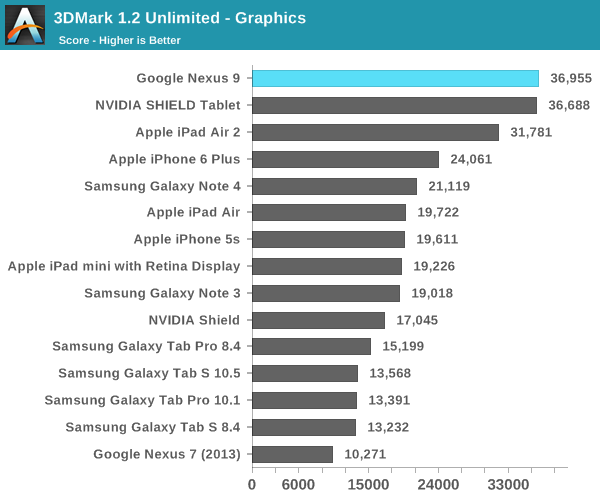
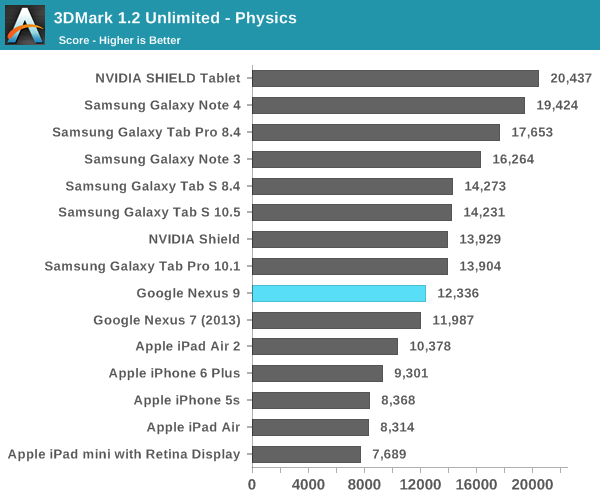
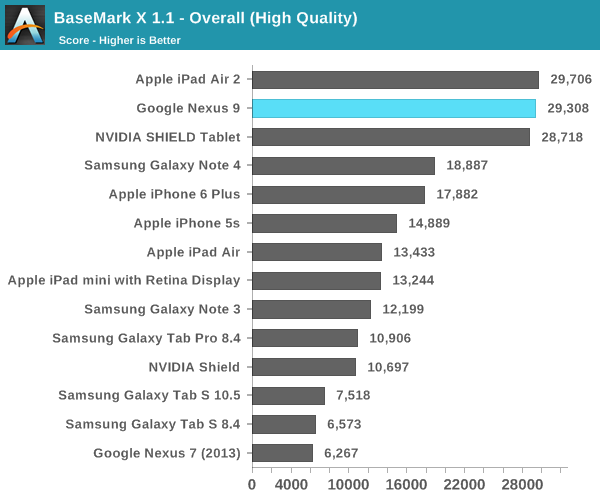
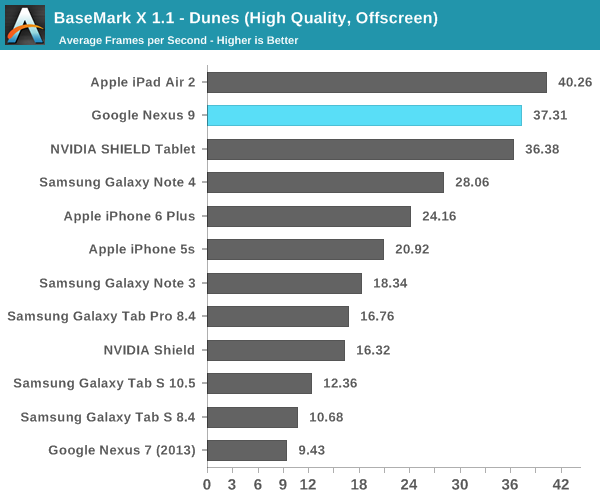
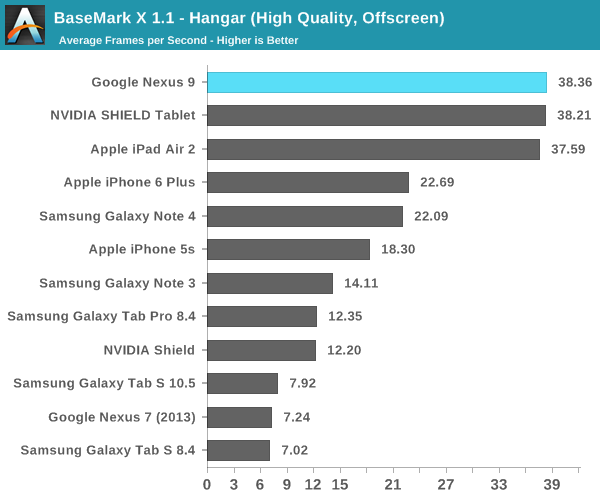
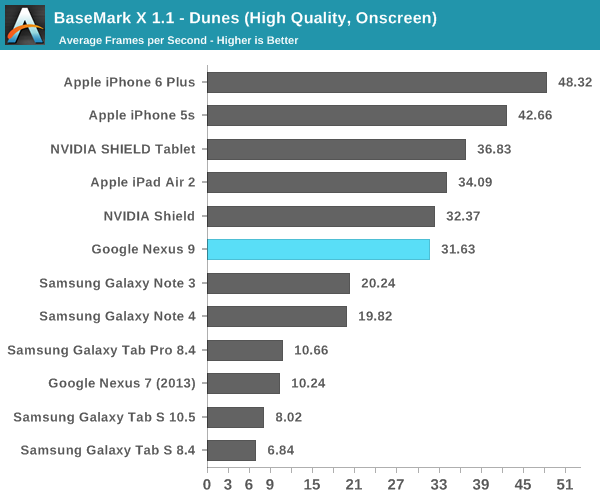

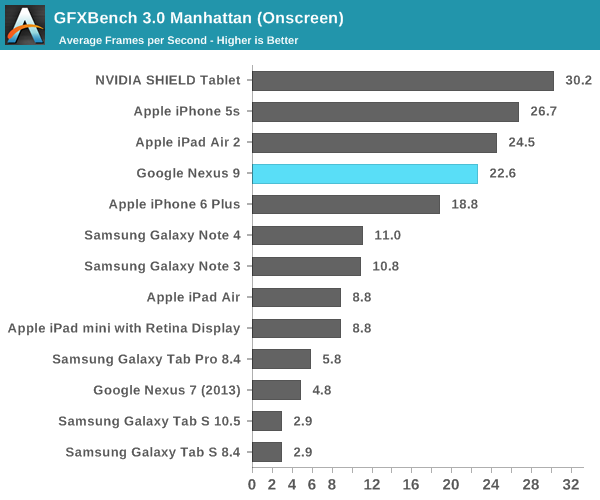
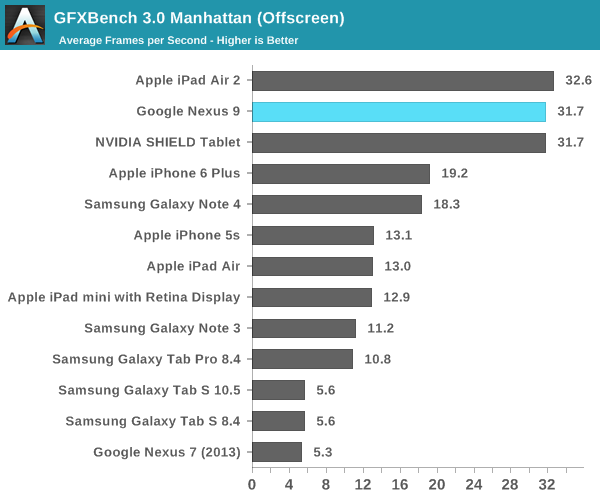
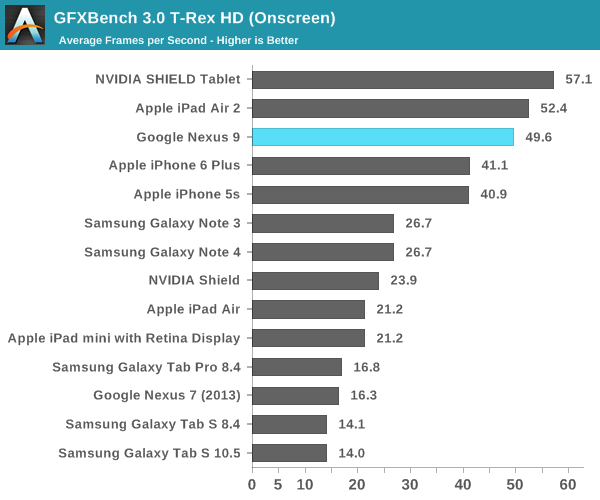
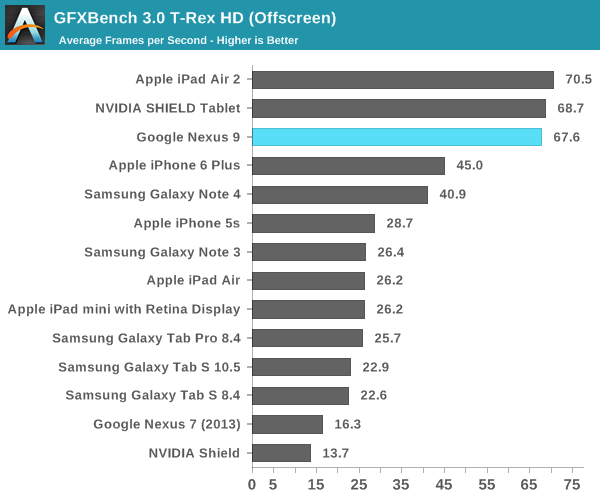
As one can see, the Nexus 9 is effectively equivalent to the SHIELD Tablet in GPU performance. The one anomaly here is 3DMark, which seems to be mostly due to differences in CPU. It's likely that this isn't representative of performance though, as 3DMark's physics test seems to perform better on CPU configurations that rely on larger numbers of cores and higher clock speeds. In the purer GPU tests like Basemark X and GFXBench performance across the board is effectively identical to the Cortex A15 variant of the Tegra K1.
Initial Conclusions
For the most part, the Nexus 9 shows some level of promise as a tablet. While Denver in NVIDIA’s Tegra K1 is a bit bimodal in performance, with sufficient optimization it has immense promise from a sheer performance aspect. While the SoC alone makes the Nexus 9 a fascinating device to look at, the rest of the package has a great deal of potential. The minimalistic design of the device, combined with good material design and stereo front-facing speakers really shows the high-end aspirations of this tablet. While we haven't received anything in the way of accessories, the keyboard folio case seems to be a way of pushing the tablet formfactor in a new direction. This is especially evident when seeing the focus on previous Nexus tablets which seemed to assume touch-only input.
While only a first look, there’s definitely a lot to be impressed by here. However, it will take a full review to really determine whether the Nexus 9 can compete with the iPad Air 2 as a tablet is more than just a function of battery life and SoC performance. In addition, it's hard to draw any real conclusions about this tablet quite yet as the software we received in no way represents a shipping build. Even if inactive, loggers and debug tools generally reduce performance, and it's likely that a great deal of optimization has occurred in the two months since this software build was completed. Once again, we haven't been able to get a newer build, but the full review should be done with shipping firmware.










146 Comments
View All Comments
jhenzie - Tuesday, November 11, 2014 - link
Final compilation has always been on device and ART can consume Dexfrostyfiredude - Monday, November 3, 2014 - link
ART bytecode most certainly IS optimized for 64-bit assuming they didn't throw in native methods or odd languages. "Apps built in Java will automatically gain these benefits, with no changes to existing code. Apps built on other languages, built with the Android NDK r10b [0], can compile for 64-bit architectures to access the features listed above." https://plus.google.com/u/0/+AndroidDevelopers/pos...buttdill - Tuesday, November 4, 2014 - link
ART compiles java bytecode to the appropriate native bytecode: it should generate AArch64 instructions if the hardware supports it. The java bytecode is platform-independent so it doesn't care about AArch64, so purely Java apps don't need to do anything special to be 64-bit, just be run by a 64-bit interpreter.And while there is no Dalvik, there is still native code: these are the apps which don't "run purely on ART bytecode". This native code has to be recompiled by the developers to include AArch64 insruction set.
Zarsus - Wednesday, November 5, 2014 - link
ART will compile any non-native Android app to 64-bit when viable just as Java VM will compile any java code to 64-bit when viable.What makes you think ART doesn't do that when it makes sense anyway?
Samus - Monday, November 3, 2014 - link
Well yeah, but how many Apple apps are 64-bit? How many Windows apps?Apple is going to have the short-term advantage in just a few months, though, as they are requiring their devs to publish 64-bit versions of apps when they update them after February...
I think the timeframe Apple is giving is a little aggressive, but commendable. Google should consider doing the same thing, but because of the way Play Store works (no screening) I doubt they will.
darwinosx - Monday, November 3, 2014 - link
Apple has been 64 bit for a year and ART is still a runtime. Many iOS apps are 64 bit and they are complied for the shot part.kron123456789 - Monday, November 3, 2014 - link
"Well yeah, but how many Apple apps are 64-bit?" — I think almost all of them. All the benchmarks, at least.noelbonner - Tuesday, November 11, 2014 - link
There are a number of tablets that are higher ranked in CONSUMER BASED rankings (like http://is.gd/yWOP3B for example).craighamilton - Saturday, December 6, 2014 - link
Not a big fan of Nexus 9... there are plenty of tablets that have higher user satisfaction(see http://www.topreport.org/tablets/ for example...)
chizow - Monday, November 3, 2014 - link
How so? That's exactly the point, Apple had the opportunity to go with a significantly bigger battery with their larger screen size but didn't, in fact the battery on the Air 2 is smaller than the Air 1. We also know for a fact it is harder to get bigger batteries into devices the smaller they get, and large tablets can scale battery much higher due to size/surface area.